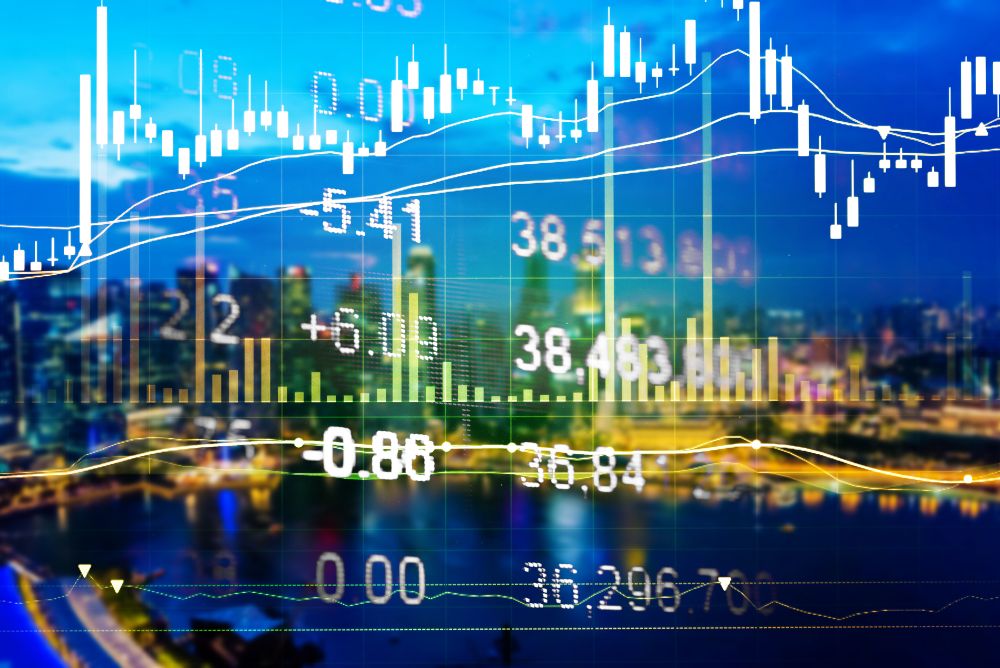
Over the past four decades, the Australian dollar has traded in a range versus the US dollar from 0.48 to 1.20. After spending most of the period from 2011-2013 above parity, the Australian dollar has returned towards the middle of its historic range, having fallen as much as 38% from its recent highs. Given how much it declined between early 2013 and the end of 2015, it is tempting, but possibly wrong, to conclude that Australian dollar’s bear market might be over. Given Australia’s dependence on the export of raw materials to China and the country’s rising debt burden, we wonder if the Australian dollar risks retesting its lows of around 0.5 Australian dollar per US dollar this decade.
On the face of it, what happens in China shouldn’t matter to Australia too much. Australian exports amounted to 14% of GDP in 2016, and 23% of those exports were to China. This means that about 3.2% of Australia’s GDP depends directly on Chinese demand, a seemingly modest amount.
The truth about Australia’s reliance on Chinese demand is more complex. Around 65% of exports, or around 9% of GDP, are mineral ores, including iron ore and coal briquettes, gold and industrial metals. Except for gold, the value of these materials depends heavily on Chinese demand, both directly and indirectly. China uses two-thirds of the world’s iron ore and is a heavy consumer of coal for power generation. In both markets, China is a key determinant of the global price.
Moreover, the Australian dollar’s value versus US dollar appears to be closely tied to the prices of various commodities including iron ore, which amounts to 20% of the country’s exports. Iron ore found price support in early 2016 as China successfully stabilized and slightly improved its rate of economic growth at just below 7%.
The problem for iron ore, coal and the Australian dollar is that China’s ability to stabilize its growth rate may have been temporary. China’s President Xi Jinping pulled out all the stops ranging from fiscal stimulus to allowing bank credit to grow quickly to boost growth in 2016 ahead of his re-election earlier this year for another five-year mandate. Now that he has achieved his goal of securing another term, the Chinese government is now taking action to tighten up lending practices in a manner that could significantly slow China’s growth and pose a threat to commodities generally and to iron ore and the Australian dollar in particular. China may also look to ramp up its use of alternative energy, which could threaten the value of coal briquettes, Australia’s second biggest export.
While Australia and China have very different, if not closely interlinked economies, they have one major feature in common: both countries have gone from having relatively low levels of debt prior to the US and European financial crisis, to having very high levels of leverage today. The US and eurozone began their financial crises in 2007 and 2008 when their total debt levels (public + private) totalled around 230% of GDP. At the time, Australia, which came through the financial crisis relatively unscathed, had a total debt level around 195% of GDP; and China, whose economy performed even better during the acute phase of the financial crisis, had levels of around 140% of GDP.
What a difference a decade makes. China boosted its post-2008 growth rate by encouraging its private sector to ramp up borrowing. This worked well for a time, boosting not only China’s economic growth but also fostering a sharp rebound in commodity prices, which benefitted many commodity-exporting countries, including Australia, especially during the period from late 2009 until 2013.
Since 2013, commodity prices have been sliding. Ordinarily, one might have expected this to have hurt Australia’s economy, but the Aussies took a page out of the Chinese playbook and encouraged by low interest rates, have been ramping up debt from 201% of GDP in 2012 to 241% in 2016, helping to stabilize Australia’s growth rate amid a deteriorating trade picture.
When debt ratios are low, adding to leverage tends to boost economic output as borrowing translates into spending and investment, which adds to GDP. However, as debt levels rise, additional borrowing serves mainly to refinance and pay interest on existing loans, and growth rates slow down. This is the point that Australia and China have now reached. Their ability to stabilize slowing growth rates by additional borrowing is coming to an end.
In addition to its debt and leverage concerns, China has other problems that could easily spill over into its various commodity suppliers, including Australia. For starters, China’s currency is substantially overvalued. Many emerging markets and commodity currencies, including Australian dollar, have fallen by 30-40% over the past few years relative to the Chinese renminbi. Among the major currencies, the yen, pound and euro have fallen by over 20% over the past several years. As such, the renminbi may need to fall an additional 20% or more versus the US dollar to maintain competitiveness.
Between 2014 and 2016, China sold-off US$1 trillion of reserves to maintain the renminbi in its overvalued state versus the US Dollar. So far in 2017, those reserves have been stable at about US$3 trillion. Don’t be fooled by the recent stability in reserve levels: China’s reserves show a strong seasonal pattern. In the first half of 2014, 2015 and 2016, reserve levels fell by an average of US$33 billion. During the second half of those same years, reserve levels fell by US$236 billion, on average. Unless China devalues its currency, its reserve levels are likely to resume their decline towards US$2.5 trillion later this year. China can allow its currency reserves to fall for a while longer but not indefinitely.
When China someday devalues its currency, it will likely send shockwaves through commodity markets, emerging markets and the Australian dollar-US Dollar market. In August 2015, when China devalued the renminbi by 4%, the Australian dollar fell by 6% versus US Dollar in the following days. Of course, China could devalue its currency slowly but either way it will likely contribute to downward pressure on the Australian dollar.
China’s last major issue is housing. It’s phenomenal credit growth has fuelled a boom in construction and a property bubble — one that has used enormous quantities of iron ore, copper and other metals. This may be coming to an end soon to the likely detriment of commodities and the Australian dollar.
Amid the rebound in commodity prices, solid Chinese growth and continued domestic credit growth, the Australian economy has shown signs of life in recent months. Unemployment has begun falling while both GDP and inflation have perked up. In the short term, this is supportive for the Australian dollar and might even encourage the Reserve Bank of Australia (RBA) to tighten policy. If the RBA does tighten, it will probably only be keeping pace with the Federal Reserve. Longer term, Australia is likely to run into problems both because of what appears to be an inevitable economic slowdown in China as well as the fact that its own economy is overleveraged.
As such, it’s hard to rule out a return to the lows of Australian dollar to US Dollar from the early 2000s, later this decade or early in the 2020s. Moreover, after two years of range trading, the cost of options on Australian dollar has fallen to levels that suggest complacency regarding the possibility of sharp moves in the currency.
Bottom line:
• Australia remains more dependent on China’s sustained growth than the export figures suggest.
• China suffers from both high debt levels and an overvalued currency.
• The value of iron ore, coal briquettes and other key Aussie exports could collapse if China’s economy runs aground.
• Australia has also overleveraged its economy to nearly the same extent as China, Europe and US
• Australian dollar could eventually retest its low of around 0.50 versus US dollar.
• Australian dollar options are looking complacent after years or range trading.
• The RBA may have to keep rates low for many years until Australia’s debt burdens decline relative to GDP.
Erik Norland is executive director and senior economist of CME Group.









